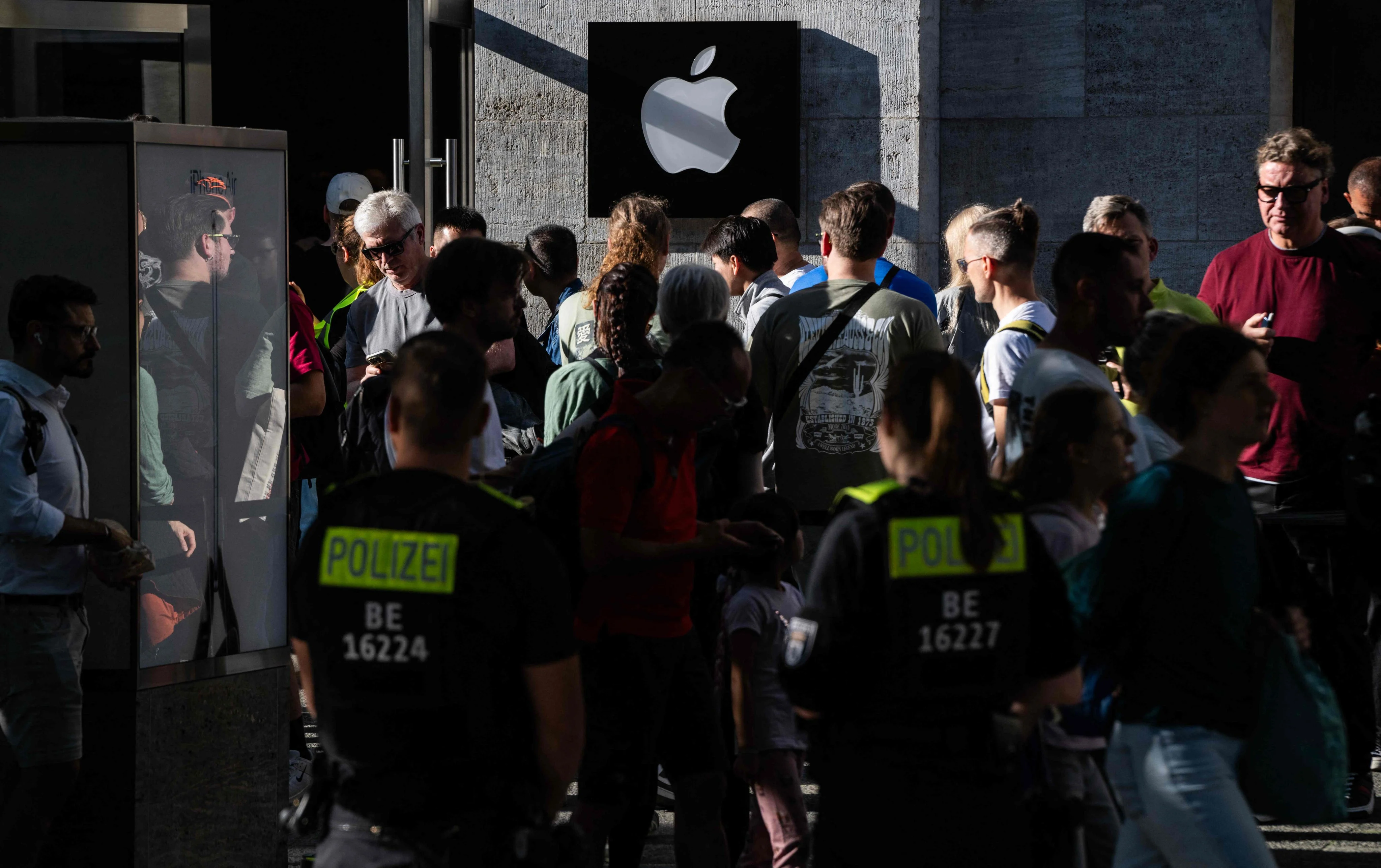By Bloomberg
Copyright scmp

For the past four years, some Apple customers have been waiting for a significant redesign before buying a new iPhone. The time has come for those consumers, with the iPhone 17 Pro, Pro Max and iPhone Air going on sale.
It is the first time since 2020 that Apple has rolled out several new phone designs. Alongside the new handsets, it also released the Apple Watch SE, Watch Series 11, Watch Ultra 3 and AirPods Pro 3 into stores on Friday.
The new phones, which bring a fresh look in addition to battery life and camera improvements, attracted long lines at Apple stores from Hong Kong to London to New York to Los Angeles.
At the Fifth Avenue location in Manhattan, a line for walk-ins – people who had not pre-ordered a device to pick up – wrapped around the block, extending to Madison Avenue. Many shoppers indicated they were upgrading belatedly from Apple’s four-year-old iPhone 13 series.
In Frankfurt, Germany, about 100 people gathered around midday, including some who had travelled long distances.
Julia Sowden, an online creator, said she had trekked about 100km (62 miles) to Frankfurt to get the iPhone 17 Pro Max in orange. She was replacing her iPhone 13 Pro Max, whose battery had seen better days.
“I’m actually an influencer, so it’s very important to have the best camera and the longest battery life,” she said, adding that the lengthy trip was worth securing the device the day it went on sale. “Then it wouldn’t have been until October 12. That would have taken too long for me.”
Indeed, most customers interviewed were planning to buy an iPhone 17 Pro or Pro Max, not necessarily the superthin iPhone Air. The Pro, and particularly the Pro Max, are aimed at power users including early adopters and tech enthusiasts – precisely the sort of people who might be motivated to queue up in front of a store around dawn.
At New York’s Fifth Avenue Apple Store, few shoppers mentioned the Air. The iPhone 17 Pro Max was mostly sold out at that location, with additional inventory for the iPhone 17 Pro and Air.
The enthusiasm for the iPhone 17 Pro line comes amid early feedback from customers that the phone, particularly in the deep blue colour, is quick to show scratches on the back side. Reporters also found the black iPhone Air showed scuffs, and that Apple’s magnetic MagSafe charger could leave a circular mark.
Ronnie Sharp, who works in New York’s financial industry, was one of the few shoppers interviewed who bought the Air.
“I’m not worried about battery life. I don’t use my phone that much,” he said at the Fifth Avenue store, adding that he preferred thin handsets and already owned one of Apple’s MagSafe battery packs.
As Apple Chief Executive Officer Tim Cook greeted customers queuing at the Fifth Avenue store, protesters from a group called Design It For Us assembled near the entrance. The group is focused on advocating for policies to protect young people online, according to its website.
Earlier on Friday, a small crowd assembled in Hong Kong at Apple’s flagship store to check out the new handsets, and stock for walk-in purchases was similarly limited only to the iPhone Air.
High stakes
The new Pro editions return the iPhone to an aluminium shell and have a redesigned back, while the iPhone Air is Apple’s first attempt at a radically different design with its thin silhouette as the main selling point.
The stakes are high for Apple.
The company faces lofty expectations from Wall Street for holiday period sales, despite global economic concerns and the threat of future price increases due to tariffs. The Cupertino, California-based electronics giant is also trying to convince consumers its mojo is back after its artificial intelligence strategy fell flat.
The new models’ reception in China will be of great importance to the company. Sales in the region fell 6 per cent in the weeks leading up to the new device family launch, marking a steeper than usual slump.
After years of success in the region over the past decade, Apple now holds only 12 per cent of the local market, trailing Oppo, Huawei Technologies, Xiaomi and others.
The launch of the new iPhone line-up – a product that debuted in 2007 – hits as Meta Platforms and others are moving on to AI-powered wearables, including smart glasses with displays.
The new models also land weeks after Alphabet’s Google and Samsung Electronics rolled out upgrades to their flagship smartphones.
Samsung, in particular, is a threat to the iPhone’s dominance. It launched a seventh-generation version of its book-style foldable phone, which appears to be a hit with consumers due to its more durable frame and thinner look. Apple will not have a foldable phone until the end of next year.
The iPhone 17 Pro line is resonating most with buyers because it improves the features that people most want in a new phone: battery life, camera technology and durability. It is also priced from US$1,099, only US$100 more than the iPhone 16 Pro it replaces.
“Prices are being really increased for the first time in several years, so if we see a typical replacement cycle with higher prices, plus some progress on AI, that may not be an exciting set-up for the stock, but it’s a decent one,” said John Belton, portfolio manager at Gabelli Funds, which has US$33 billion in assets under management.
The iPhone Air, on the other hand, may not drive sales despite the attention it will receive. The US$999 device focuses on a thin profile, but has drawbacks in battery life, audio and cameras.
It is also the same price as a 17 Pro when factoring in an optional magnetic battery attachment to increase endurance.
Earlier this year, Samsung launched the Galaxy S25 Edge, using a similar concept to Apple’s iPhone Air. Thus far, it has been a sales dud.